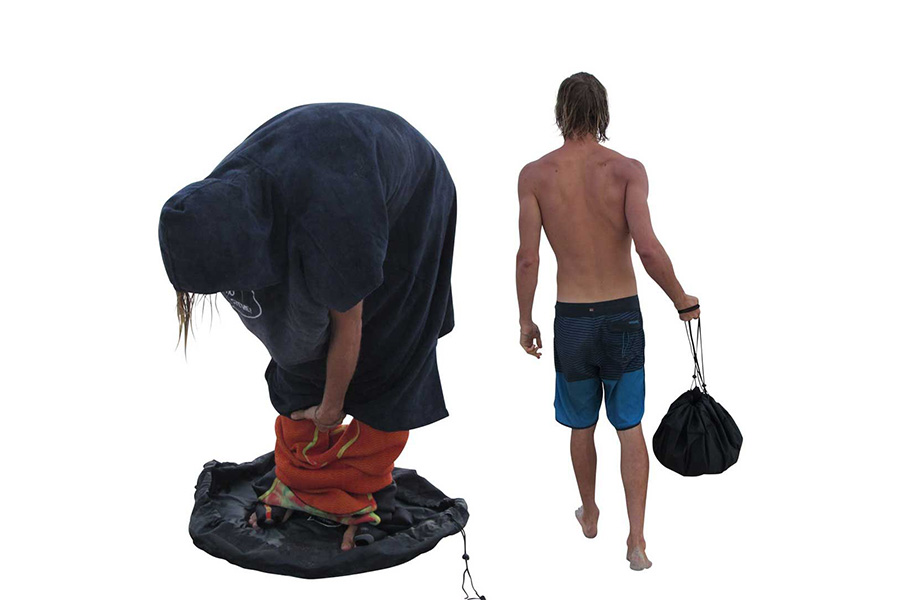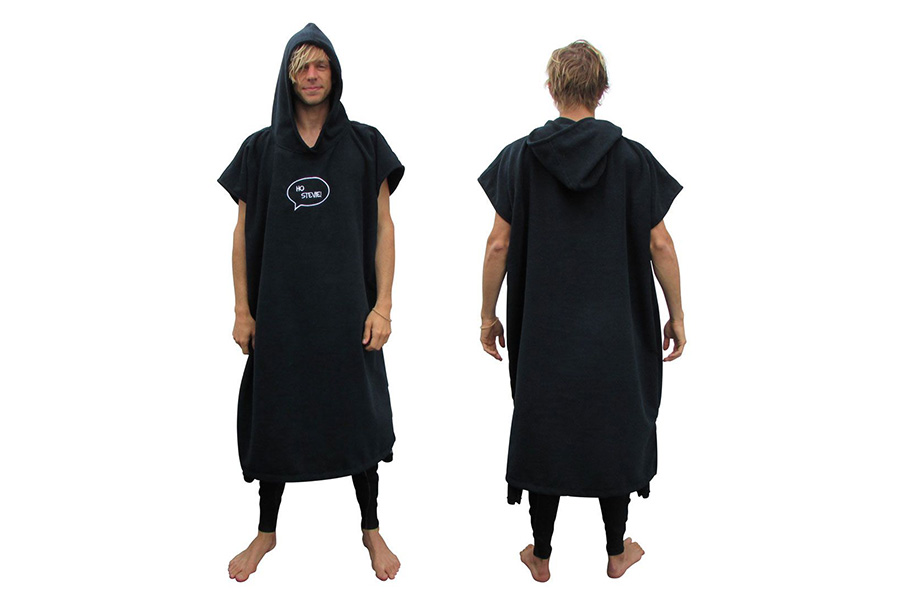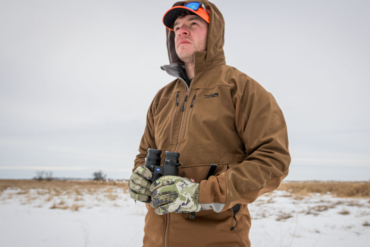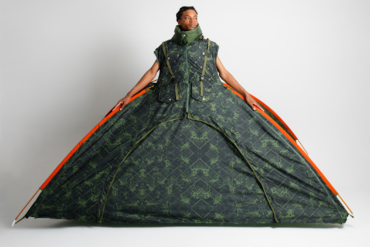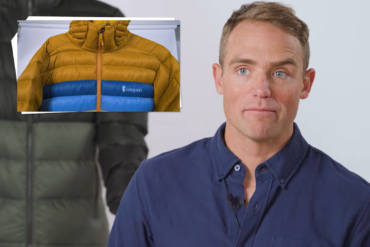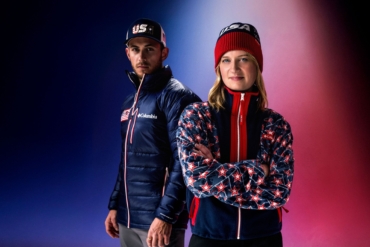For any surfer who lives a few clicks north or south of the equator, a wetsuit is the most important piece of gear after the surfboard. You need a good suit — one that fits and will last.
Basic wetsuits of any quality start at around $150 and can cost over $500. Of course, you can find end-of-season sales and cut-rate brands, but you get what you pay for.
Steve Mara founded Ho Stevie! in 2014 with a mission to make high-quality, affordable surf equipment. The brand makes wetsuits and more than 30 other surf products ranging from soft-top foam boards to changing ponchos. We spoke with Mara to learn more about his operation.
Check Out Ho Stevie! Wetsuits
Wisconsin-Bred, Golden Coast-Inspired
Mara’s office is located in San Diego just a few blocks from the Pacific Ocean and smells like a new wetsuit — which any surfer can tell you is much better than an old wetsuit. Around him are boxes full of 4/3’s, 3/2’s, other Ho Stevie! surf accessories, and not much else.
Mara didn’t grow up surfing or going to surf shops. He grew up in a small town in Wisconsin and started surfing when he moved to California in 2009. Since then, he has been surfing almost every day.
The more Mara surfed, the more interested he became in his equipment. After nearly a decade of testing other brands’ products, and spending thousands of dollars in the process, Mara wanted to see if there was a way to buy quality products for less. His curiosity led him on a mission to cut out the middleman and sell a premium suit for the price of your cable bill, as opposed to half your rent.
His first foray was a mouth mount for a GoPro in 2014, so a surfer could document waves hands-free. The latest product he brought to market might have the biggest impact — the Ho Stevie! wetsuit. He chose the most obvious place to start with a basic 3/2, worn by surfers in most of the world’s middle latitudes. Of all of his products, wetsuits are by far the most complicated and thus took the longest to develop.
“We took a year and a half, getting prototypes made from a ton of different wetsuit factories until we finally found one that could make the perfect wetsuit for us,” Mara said.
Testing is a little less complicated. Mara lives at the beach and surfs every day. There’s your R&D.

How Does ‘Ho Stevie!’ Make Any Money?
Ho Stevie! sells its premium wetsuits for $200, which, in some cases, is less than half the price of a similar product from competing brands.
“We probably have slimmer profit margins, but I know we have much less overhead than the big brands. By selling directly to surfers, we cut out a huge retail markup. We run a very lean operation,” said Mara, running his hands along the sleeve of one of his 3/2 suits. “It’s just me, my wife, and our new employee, CJ.”
Mara did some research and found that when companies distribute their wetsuits through third parties, such as surf shops, the result is a 30-50% markup to the end consumer. That approach, in addition to large marketing budgets and sponsored athlete contracts, creates significant overhead costs for brands.
“I recently watched a series about how pro surfers make money. A lot of the big companies are paying hundreds of thousands of dollars per sponsored surfer. We don’t do that, which saves us money, and we pass our savings onto our customers,” said Mara, “It is our mission to have the best-quality surf gear, for the best price, with the best service.”
How Wetsuits Work
Not all wetsuits are created equal. To understand what makes a quality wetsuit and which is right for you, it’s helpful to know aspects of their design and how they work.

When a surfer wears a wetsuit, they are, in fact, always wet — hence “wetsuit.” Wetsuits are designed to trap a thin layer of water between the neoprene fabric and a surfer’s skin. The wearer’s body heat warms the trapped layer of water. And the combination of the warm water layer and the thickness of the neoprene insulates a surfer, keeping them warm in cool water temperatures.
Buying a Wetsuit
The main considerations when buying a wetsuit include neoprene thickness, size/fit, seam style, and zipper placement.
Neoprene Thickness
The thickness of a wetsuit is measured in millimeters. Ho Stevie! currently makes 3/2 and 4/3 wetsuits. The first number there is a measurement of the neoprene thickness around the torso, and the second number indicates the neoprene thickness in the arms and legs.
Most wetsuits use different neoprene thicknesses in the torso and limbs for two reasons. One, keeping a high core temperature has a greater warming effect on the wearer. Two, thinner neoprene helps increase flexibility and maneuverability. The thicker the wetsuit, the more difficult it is for the wearer to paddle.
Ho Stevie! recommends 4/3 wetsuits for water as cool as 51 degrees Fahrenheit, and 3/2 wetsuits for water as cool as 56 degrees F.
Size & Fit
The next considerations are size and fit. Ho Stevie! offers sizes XS to XXXL, with in-between sizes to accommodate those who require longer or shorter arm and leg lengths.
“Our size chart is very accurate, and we are here to help anyone who is in-between sizes or has other questions,” said Mara.
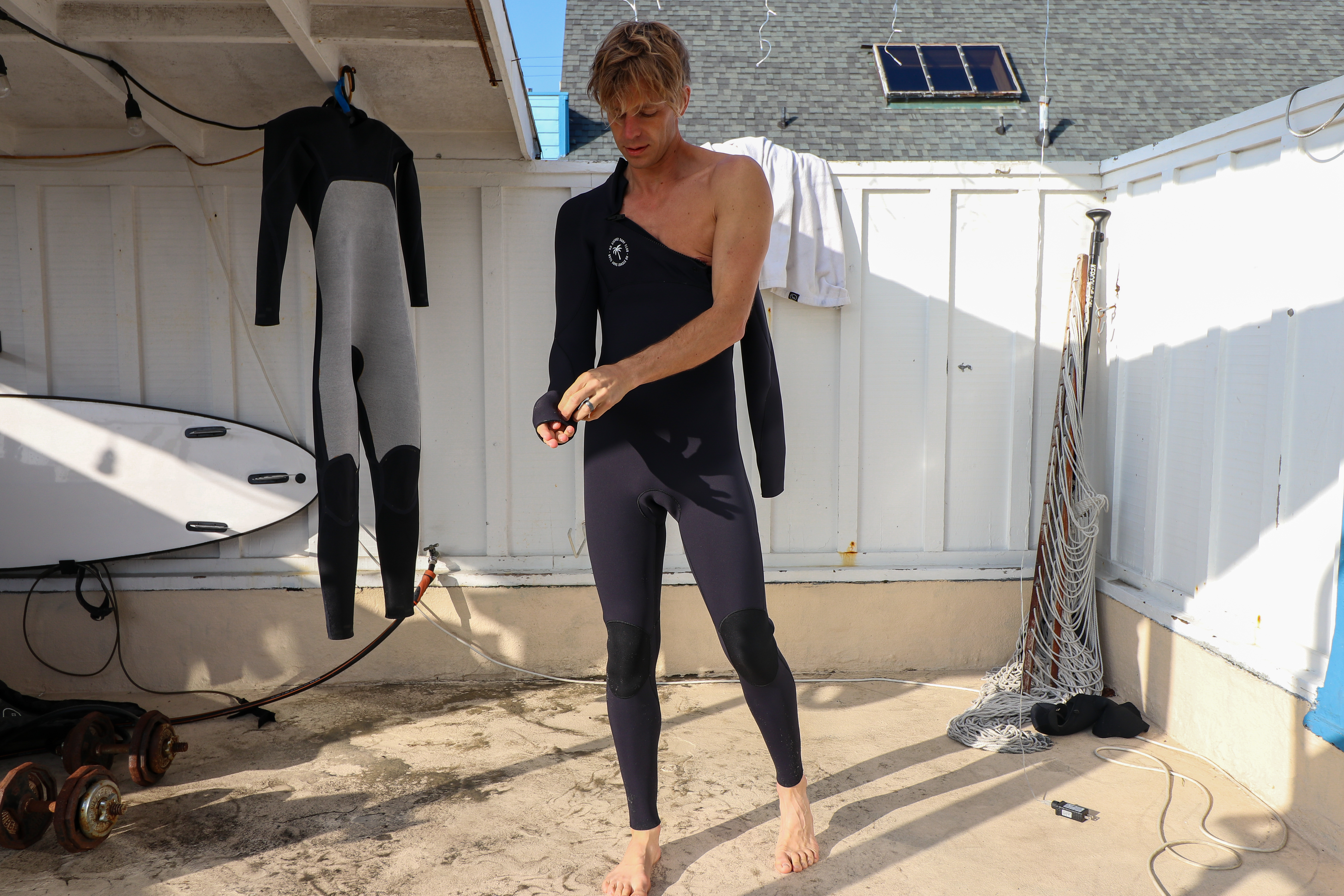
A good wetsuit should fit snugly, like a second layer of skin. It should fit tight (but comfortable) around the neck, wrists, and ankles, and there should be no excess fabric that sags or bunches. A loose-fitting wetsuit will let too much water in — and out (a term known as “flushing”). Wetsuits that let too much water in and flush out easily are ineffective.
Seam Style
The seams of a wetsuit are one of the most vulnerable parts of the design, as they have a direct impact on comfort, durability, and watertightness. There are three main types of wetsuit seams: overlock stitching, flatlock stitching, and blind stitching.
Ho Stevie! wetsuits use the blind stitching method, where the stitches don’t fully penetrate the neoprene panels, creating fewer holes and resulting in a more watertight construction, according to the brand. Once the panels of the suit are sewn together, the seams are glued and reinforced with neoprene tape for a watertight seal.
Zipper Placement
The last consideration is zipper placement. Wetsuits with zippers are either back-zip or chest-zip, which have an impact on flexibility and warmth. Ho Stevie! wetsuits are chest-zip and feature YKK hardware. Chest-zip wetsuits are made for flexibility and keeping water from penetrating the zipper seams, the brand said.
Putting Its Money Where Its Mouth Is
Ho Stevie! offers a 100% money-back guarantee if surfers decide they don’t like the fit, feel, look, or performance of its products. Mara and his team are confident in the gear they make and want customers to trust that they can try the brand’s products risk-free. He’s consistently in contact with his customers, listening to their concerns.
“We want to make sure customers are stoked about their purchase,” said Mara. ”Some suits from our first batch had defective zippers, but we refunded or replaced them and have had zero zipper problems since. We want to continue with this model of quality and keep the surfers stoked.”
Ho Stevie! Wetsuits & Surf Gear
Mara and his team at Ho Stevie! are committed to making products that they will use themselves, which includes more than just wetsuits. Check out Ho Stevie!’s selection of wetsuits, changing mats, dry bags, changing ponchos, and wetsuit hangers.
Wetsuit: $200

Made with blind stitching to prevent holes and reinforced with GBS (glued and blind-stitched) seams, these 4/3 and 3/2 wetsuits are constructed to keep water out.
Each wetsuit has a YKK front zipper for better access and is made from Ho Stevie!’s SuperStretch limestone-based neoprene that moves with you. Reinforced knee pads help keep the suit from wearing out easily, and each suit comes with a key loop to keep your keys safe while on the water.
Check Price at Ho Stevie!Check Price at Amazon
Wetsuit Hanger: $30

This hanger is designed to maximize airflow without causing damage to a wetsuit’s shoulders like traditional hangers. It also folds to allow for it to fit different-sized wetsuits.
Check Price at Ho Stevie! Check Price at Amazon
Wetsuit Changing Mat: $20
The Ho Stevie! Wetsuit Changing Mat is made to help extend the life of your wetsuit by preventing it from touching dirt and gravel in the parking lot. Made from waterproof materials, the circular mat is wide enough to stand on while undressing and can hold both your wetsuit and towel to be cinched up with its drawstring and transported in your car.
Check Price at Ho Stevie! Check Price at Amazon
Surf Poncho: $35
Gone are the days of trying to cover with a car door. This Surf Poncho provides 47 inches of protection for even the tallest people. The brand provides this poncho in microfiber or 100% cotton, and it’s equipped with a hood, arm holes, and a loop to hang it dry.
Check Price at Ho Stevie!Check Price at Amazon

Product Development & the Future
Ho Stevie! relies on its customers’ input and feedback to inform the products it manufactures.
“We make small batches, and we make more when we see that people like them and are buying them,” Mara said. “Our first batch of wetsuits sold out quickly at the beginning of the year, and we recently stocked our second batch with additional sizes.”
Mara is currently working on creating a wider range of product options – women’s suits, winter 5mm suits, wetsuit accessories like boots and gloves, and long-sleeve springsuits.
When asked about the future of his company, Mara said he has tinkered with the idea of a high-quality fiberglass surfboard.
But on a higher level, he stated, “I want to make every surf product that people want and provide more value to the customer by offering these products for a lower price and with better service. I also want to produce the best written and video surf content to keep everyone entertained.”
This article is sponsored by Ho Stevie! You can learn more about the brand’s wetsuit and other surf gear offerings online.

